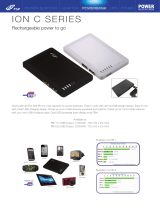
RabbitCore RCM2200
4.4 Memory.............................................................................................................................................. 27
4.4.1 SRAM.........................................................................................................................................27
4.4.2 Flash EPROM............................................................................................................................. 27
4.4.3 Dynamic C BIOS Source Files...................................................................................................27
4.5 Other Hardware.................................................................................................................................. 28
4.5.1 Clock Doubler ............................................................................................................................28
4.5.2 Spectrum Spreader...................................................................................................................... 29
Chapter 5. Software Reference 31
5.1 More About Dynamic C..................................................................................................................... 31
5.2 I/O.......................................................................................................................................................33
5.2.1 PCLK Output..............................................................................................................................33
5.2.2 External Interrupts......................................................................................................................33
5.3 Serial Communication Drivers...........................................................................................................34
5.4 TCP/IP Drivers...................................................................................................................................34
5.5 Upgrading Dynamic C .......................................................................................................................35
5.5.1 Extras.......................................................................................................................................... 35
Chapter 6. Using the TCP/IP Features 37
6.1 TCP/IP Connections...........................................................................................................................37
6.2 Running TCP/IP Sample Programs....................................................................................................39
6.3 IP Addresses Explained...................................................................................................................... 41
6.4 How IP Addresses are Used............................................................................................................... 42
6.5 Dynamically Assigned Internet Addresses ........................................................................................43
6.6 Placing Your Device on the Internet..................................................................................................44
6.7 How to Set IP Addresses in the Sample Programs.............................................................................45
6.8 How to Set Up Your Computer for Direct Connect...........................................................................46
6.9 Run the PINGME.C Sample Programs..............................................................................................47
6.10 Running More Sample Programs With Direct Connect...................................................................47
6.11 Where Do I Go From Here?.............................................................................................................48
Appendix A. RabbitCore RCM2200 Specifications 49
A.1 Electrical and Mechanical Characteristics ........................................................................................50
A.1.1 Headers......................................................................................................................................53
A.1.2 Physical Mounting.....................................................................................................................53
A.2 Bus Loading ......................................................................................................................................54
A.3 Rabbit 2000 DC Characteristics........................................................................................................56
A.4 I/O Buffer Sourcing and Sinking Limit............................................................................................. 57
A.5 Jumper Configurations......................................................................................................................58
A.6 Conformal Coating............................................................................................................................59
Appendix B. Prototyping Board 61
B.1 Prototyping Board..............................................................................................................................62
B.1.1 Prototyping Board Features....................................................................................................... 63
B.1.2 Prototyping Board Expansion....................................................................................................64
B.2 Mechanical Dimensions and Layout .................................................................................................65
B.3 Power Supply.....................................................................................................................................66
B.4 Using the Prototyping Board............................................................................................................. 66
B.4.1 Adding Other Components........................................................................................................69
Appendix C. Power Supply 71
C.1 Power Supplies..................................................................................................................................71
C.1.1 Battery-Backup Circuits ............................................................................................................ 71
C.1.2 Reset Generator..........................................................................................................................72
C.2 Chip Select Circuit............................................................................................................................. 73





















